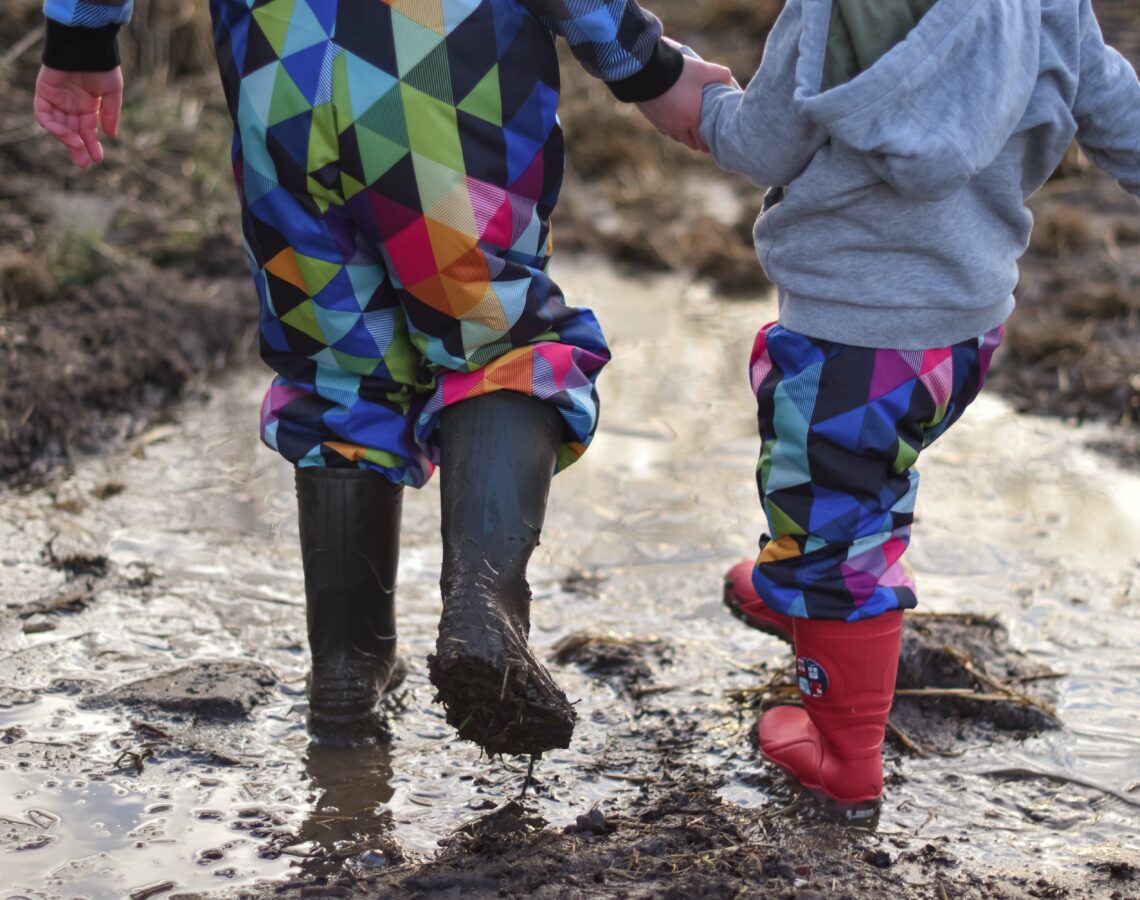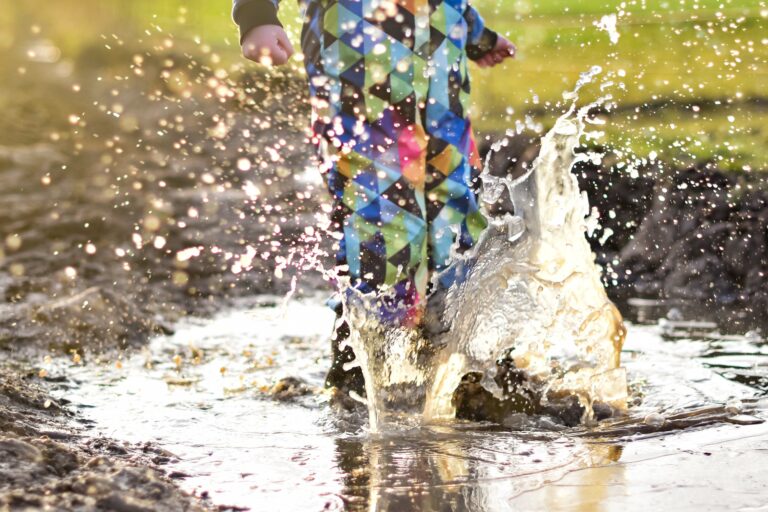Sewing With Waterproof Fabrics

I’m a firm believer in getting outside, as much as possible, whatever the weather!
I know that spending time outside, in nature, does wonders for my mental health. I also know that getting my kids outside of the house does wonders for my stress levels! (And it’s great for their mental health too.)
I’ve always lived in places that enjoy a lot of rain. If I stayed inside during wet weather, I could go weeks without leaving the house! In order to enjoy being outside in all weathers, we need great waterproofs. And since I like to sew most of our clothes, that means sewing with waterproof fabrics!
If you’re a beginner you may feel nervous about waterproof fabrics. Perhaps you don’t know where to start. Perhaps you tried once and it didn’t go well. I’m here to give you some great tips to tame those tricky fabrics.
Ditch The Pins!
Pins leave holes in waterproof fabrics and once you’ve made a hole it will be there forever! So my first tip is to avoid pins.
– When you’re cutting out your fabric, don’t pin your pattern to your fabric, use weights instead. (Hot tip: you don’t need proper ‘fabric weights’; I use water bottles, tins of tomatoes, anything heavy I have to hand!).
– When you’re constructing your garment, use sewing clips rather than pins. Clips will grip your fabric together without making holes. If your fabric is particularly slippery, try double sided washaway tape. This sticks your fabric together so it won’t move at all as you sew – it’s the perfect solution for begginers!
Use The Right Needle
To minimise the holes you create as you sew you need a sharp, fine needle. A microtex needle is often the best choice. If you don’t have a microtex needle to hand, you can try a universal needle. Because waterproof fabrics can be quite tough for the needle to punch through, you will likely find you have to change your needle more often than sewing with lighter/natural fibres.
Fancy Footwork
If you are using slippery fabric which moves as you sew, try a walking foot. A walking foot helps your machine grip your fabric from above and below and feeds the two layers through together. This helps reduce slipping and gives a more even seam.
If you are using coated waterproof fabric which feels a little sticky to the touch, you may find it catching and sticking to your presser foot as you sew. If this is the case, I strongly recommend a teflon foot. They’re generally not expensive and make a huge difference! A teflon foot allows even sticky fabrics to slide past easily. If you’re eager to get started now and don’t have a teflon foot, try putting a layer of thin paper (tissue paper/baking paper) between your fabric and your presser foot. You can then just sew as normal and the paper will prevent the fabric sticking. Once you’ve finished, very gently tear the paper away.
Check Your Stitch
Every time you make a stitch, you are creating a hole in your fabric. Every hole you make takes away from the water resistance of your finished garment. Lengthen your stitch a little to between 3mm and 3.5mm to reduce the number of holes you make. This can also help if your fabrics are puckering as you sew.
Turn Down The Heat
Most waterproof fabric should not be ironed. Some can withstand a low temperature press, but if you’re unsure, ditch the iron altogether. You can buy special mini rollers with are great for pressing seams without heat, but your fingers can do the job nearly as well!
BONUS EXTRA - Seal The Deal
Even if you follow all of the tips above, you will not be able to make a fully waterproof garment due to the holes made by your needle as you sew. For waterproof seams you need seam sealing tape. This is a special tape that is heat sealed over your seams, using an iron. I know – I just said not to use an iron! But this is an exception. When using seam sealing tape, always follow the instruction on the packet, use a pressing cloth and turn the steam off on your iron. Also, as with everything, test on a piece of scrap fabric first!
Seam sealing tap is wonderful, but you certainly don’t need it. I’ve personally never seen the point when sewing for my boys as their clothes could be as waterproof as anything, but someone will always lose a boot in puddle or fall face first into mud, and no amount of waterproofing can fix that!

You're Ready To Go!
You’ve got the tools, now it’s time to try sewing your own waterproof garments! Check out the Free Range Fun Over Trousers (available in child, adult curve and adult straight sizing), Woodland Wanderer or Park Life. Make sure to share in the FB group or tag me on on Insta to share how you get on!
Happy sewing!

What great tips for sewing with waterproof fabrics.
I was just wondering if you would be able to darken the font a little? I’ve found the grey quite light and difficult to read sadly. (This isn’t helped by a recent head injury, but grey isn’t the best for those with visual impairments.)
Thank you for the great advice and you’ve made me more confident with starting to use the waterproof fabric I’ve had for aaagggeeessss!
I will do that now!
Great timing as I’m just about to start my first woodland wanderer with soft shell.